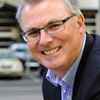What do you look like on the inside?
In his excellent book, The Leadership Mystique, Manfred Kets De Vries looks at the importance of a leader’s ‘interior’ condition and how this influences all interactions with others [i]. He asks questions such as:
- What are the problems that preoccupy the leader?
- What has emotional resonance for the leader – or connects deeply with him or her?
- What is the personal script that influences the leader’s decisions and behavior?
- What influence does the leader’s social setting or context have?
While holding a relatively high view of leadership, Kets de Vries admits there is also a darker side of leadership. He encourages leaders to be more aware of the contest between the conflicting force of impulses and defences to be managed; a contest between what is visible and what is hidden. He refers to this as the “Core Conflictual Relationship Theme (CCRT)” [ii].
CCRT is made up of past experiences and relationships that influence their style of leadership, their capacity to calibrate their ‘inner’ world, and the degree to which they embrace and manage change. This is why leaders need to be willing to have their assumptions and beliefs challenged in order to empower effective decision-making by those they lead.
What’s the bottom-line?
Kets de Vries suggests that every leader needs a ‘fool’. The fool isn’t the leader. The fool is a foil for the leader.
The fool is a very traditional role, the stabilizer of kings and queens (and other leaders) down through the ages. The fool, a guardian of reality, uses antics and humor to prevent the pursuit of foolish action, avoid group-think, show the leader his or her reflection, and remind the leader of the transience of power (Kets de Vries, 2006, pp. 261).
Anne Mulcahy, arguably the greatest CEO of Xerox, after taking on the role at a time when it was at risk of bankruptcy, states that, “It is imperative that leaders surround themselves with at least a few good critics… If you’re not careful, you can begin to delude yourself and lose touch” (Heenan, 2012, pp. 24).
This is what I like about the servant leadership paradigm. It “starts with the internal orientation of the leader, which implies that, contrary to the natural inclination of leaders to get ahead, servant leaders exhibit a readiness to renounce the superior status attached to leadership and embrace greatness by way of servanthood” [iii].
Who is your fool?
[i] Heenan, David. (2012). Leaving on Top: Graceful Exits for Leaders (Boston: Nicholas Brealey Publishing.
[ii] Kets de Vries, Manfred. (2006). The Leadership Mystique: Leading Behavior in the Human Enterprise. Harlow, England: Prentice Hall.
[iii] Sendaya, Sen, and Brian Cooper. (2012). “Servant Leadership Behaviour Scale: A hierarchical model and test of construct validity,” European Journal of Work and Organizational Psychology.
Related Content




Comments